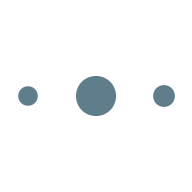Chart Formula Mathematics A Part4 [Number of Cases]
Takaaki Yanagawa (Written by) Zuken Publishing Co., Ltd. (Publishing House) 2003April 1, 2016 (Release date) Hardcover (Format) today also solve the problem of the number of cases。 First of all, question 15。 I solved it as follows。 At first、If it rotates and overlaps, it is also a different shape.、How to paint everything is ({ 2 }^{ 9 }=512\)通りある。 また回転しても形が変わらない塗り分け方を数えると8通りある。 In addition、回転したら形が2つになる塗り分け方は12通りある。 残りは回転したら形が4つになる塗り分け方である。 よってその塗り分け方は、 $$\frac { 512-\left( 8+2\times 12 \right) }{ 4 } =120$$ 通りである。 これらから、求める答えは $$8+12+120=140$$ 通りだ。 しかしこのやり方だと、回転したとき形が2つになる塗り分け方を数えるのが分かりにくい。 数えもれが出てしまう可能性が大だ。 解答例では9マスを中央の正方形と周りの4つの長方形に分けて計算していた。 長方形の塗り方は4通りで、この中から周りの4つの長方形がの塗り分け方が 1種類のとき 2種類のとき 3種類のとき 4種類のとき を場合分けして考えればいいという。 そういうものか~ 次は問16。 (1)、(2)は\(a=6\)なので南北方向の敷き詰め方は決まる。 あとは東西方向の長さに着目すればいい。 (3)はヒントによると、まず辺ABに沿った部分から敷くと4通りが考えられる。 And、それらの場合の残り部分の敷き詰め方を考えればいい。 (1)、(2)のやり方も使って解いていくことになるが、僕は計算間違いをしてしまった。 なかなかミスが多くて困ったものだ。 その次は問17。 展開式の一般項は二項定理を用いて次式で表される。 $${ _{ m }{ C }_{ j } }{ \cdot _{ n }{ C }_{ k }{ x }^{ 2j+3k } }$$ あとは\({ x }^{ 6 }\)について\(2j+3k=6\)を満たす\(0\)以上の整数\(\left( j,k \right) \)を考えればいい。 そうしたら\(m\)の範囲を求めて、それぞれの\(m\)について\(n\)が存在するかを考える。 これで(1)が解けた。 (1)が分かれば(2)は簡単に解ける。 最後に問18。 (1)は背理法を使うなりして簡単に解ける。 まぁ背理法を使わなくても解けるみたいだけどな。 (2)はヒントによると以下のようにするのがポイントみたいだ。 $$\left( { 2 }^{ p-1 }-1 \right) \times 2={ 2 }^{ P }-2={ \left( 1+1 \right) }^{ P … Continue readingChart Formula Mathematics A Part4 [Number of Cases]
